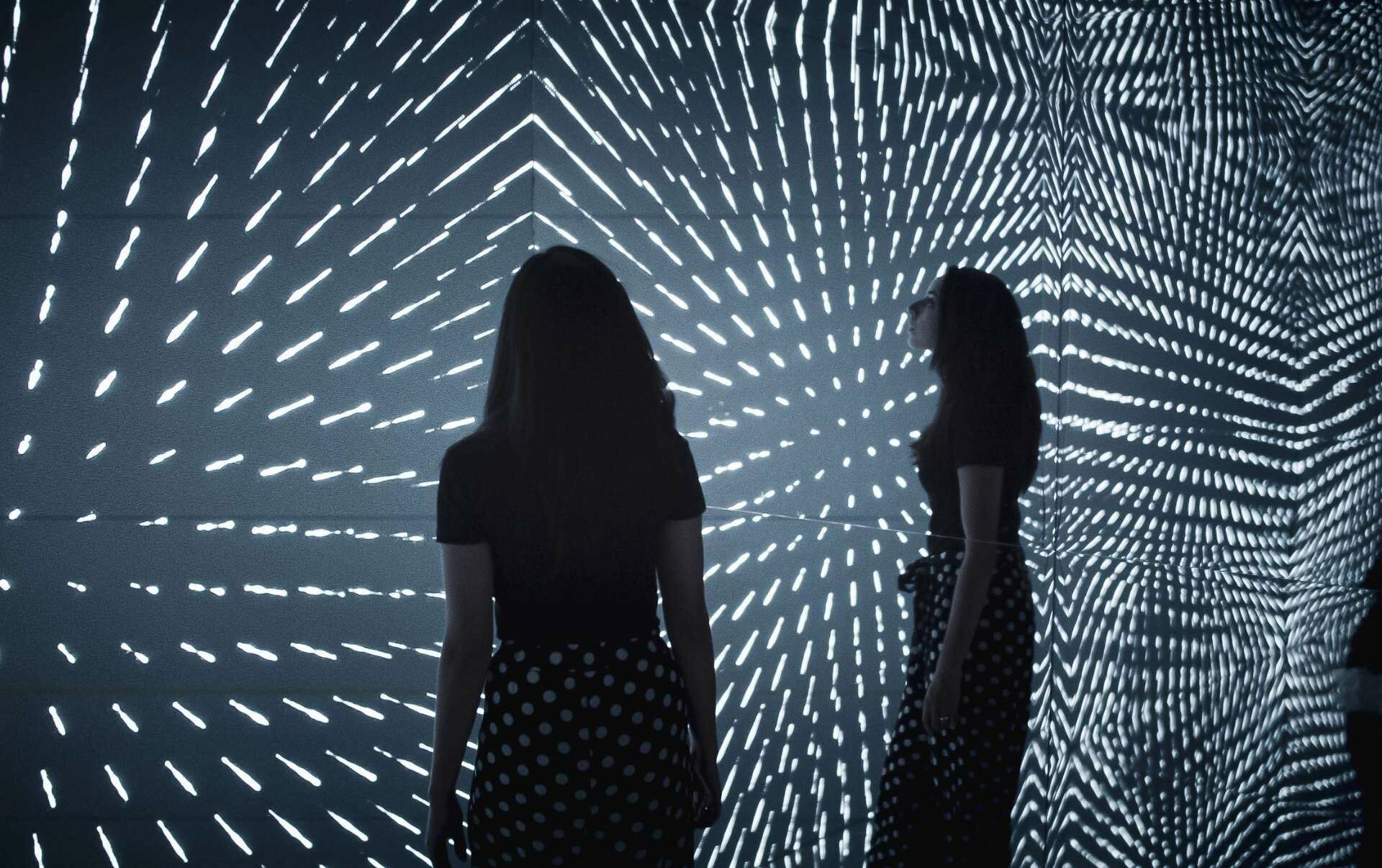Infinite Space Pushes the Boundaries of Data Visualization

Refik Anadol’s stunning exhibition Infinite Space utilizes the process of data visualization in ways rarely seen before, turning diverse and unique data into immersive masterpieces before our very eyes.
Data visualization is the practice of representing data of all kinds as visuals. Traditionally, data visualization is the graphic representation of data, typically seen in chart, graphs, maps, and more. It’s typically used to more easily see and understand trends, patterns, and outliers in data sets. Artists, however, use this idea of understanding data visually to create interesting, meaningful, and expressive pieces that convey meaning and emotion, not just graphical representations of straightforward information. This can be accomplished in a variety of ways, though artists often use specialized softwares and artificial intelligence algorithms to analyze and interpret the original data.
Data visualization is applied at its highest level in Infinite Space, where Anadol uses machine learning algorithms to process and interpret all kinds of data, and then applies what is “learned” to create his mesmerizing art installations found throughout the exhibit.
“I’m letting machines learn from a specific data set — it can be an image archive, text archive, sound archive — and let the machine learn from this,” notes Anadol. “And then I can literally take my brush and dip it into the minds of a machine and paint with what the machine learned.”
In his famed Infinity Room, which has been seen by more than two million people worldwide, a process called machine randomness generated the initial data set, which was then translated into points and lines as the visuals that visitors could immerse themselves in a 360-degree environment.
For the piece Wind Data Paintings, which made its Miami debut during Art Week 2019, data from wind patterns in Boston were collected from Logan Airport in Boston between 2016 and 2017. Anadol then took this information and crafted a swirling, colorful reinterpretation, providing a whole new way for us to look at weather patterns, and give the visitors the feel of the wind in an artwork they could step into
Anadol gives a nod to his Turkish roots with the installation Archive Dreaming. The piece utilizes 1.7 million documents from the SALT Research Archive, a specialized library and archive focusing on the history, arts and culture of Turkey, while his work Bosphorus uses data from the movement of the Marmara Sea in Turkey from the Turkish State Meteorological Service.
As the name of the exhibit may suggest, outer space offers plenty of data points for the artist. Pladis: Data Universe uses coordinate data of the Pleiades star cluster. Offering a glimpse into our own universe and scientific exploration, the pieces Machine Memoirs, Data Tunnel v. 1.0, and Celestial Structures are all built from data derived from 2.2 million images of Earth, the moon, Mars, and the galaxy from the ISS, Chandra, Kepler and Voyager missions and Hubble Telescope observations. Some of these even include data visualization in the form of artificial intelligence-created images, showing what Anadol’s machines dreamed up based on the millions of images they were fed.
Data sets from the human mind can also be found in Melting Memories. For this installation, Anadol teamed up with the Neuroscape Laboratory at the University of California, San Francisco to collect data from a study where individuals were asked to think about different short- and long-term memories as an electroencephalogram (EEG) recorded their brain data. Anadol then created visualizations with the intention of considering how our brains access memories, how we remember and the importance of memory in our lives. Visitors in both DC and Miami loved to spend time with this work contemplating the nature of remembering and spending time with their own memories.
When looking at Anadol’s work, the initial data points are not always visible, although he does occasionally incorporate them into the aesthetic to show the process, but what can be experienced in his work is the feeling of being surrounded by the sea, the vast potential for learning and wonder in our universe and what it means to be a human being in the 21st-century.
Recent Posts
Walking Through World of AI·magination
Step into a world that could not have been created
ANNOUNCING THE WINTER ARTECH·TALK SERIES WITH NASA: CONVERSATIONS BEYOND THE LIGHT
This winter, join us for a continuation of our sold-out
ANNOUNCING THE FALL ARTECH·TALK SERIES WITH NASA: CONVERSATIONS BEYOND THE LIGHT
This fall, join us for illuminating ARTECH·TALK programming at ARTECHOUSE